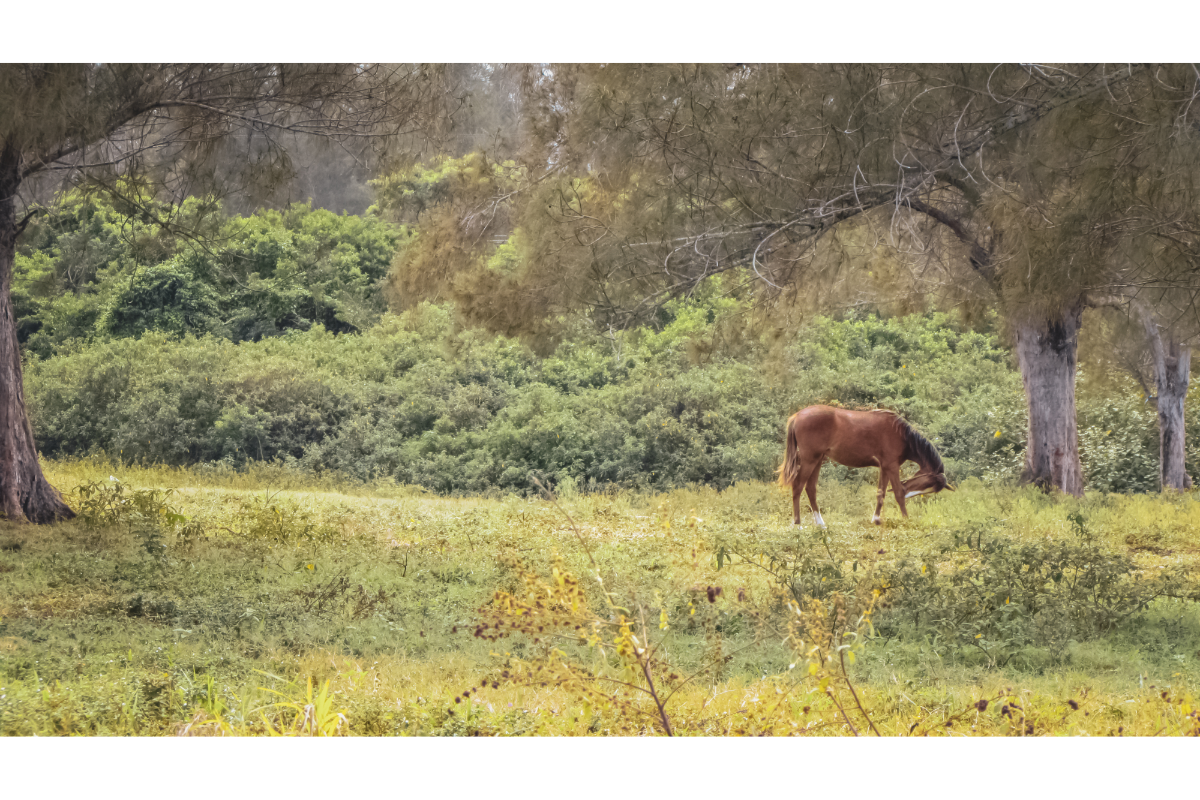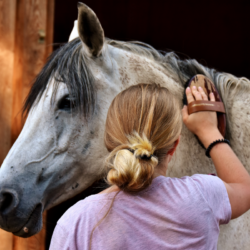Equine granulocytic anaplasmosis is a rare but growing infectious disease that mainly affects horses in the northern hemisphere, particularly in Europe and the United States. The disease is caused by the bacterium Anaplasma phagocytophilum and is transmitted mainly by ticks. Little known to the general public, it can nevertheless cause serious complications in infected animals.
What causes this disease?
Infection with the intracellular bacterium Anaplasma phagocytophilum causes equine granulocytic anaplasmosis. Belonging to the order Rickettsiales, this bacterium is transmitted mainly through the bites of ticks of the genus Ixodes, particularly Ixodes ricinus in Europe. Ticks act as vectors by feeding on blood at every stage of their life cycle, contaminating animals, including horses.
Researchers first observed the disease in sheep in Scotland in 1932, then identified the bacterium responsible in 1951. Since then, vets have diagnosed the infection in a variety of animals, including horses, dogs and even humans. The bacterium multiplies in neutrophils, a type of white blood cell, and spreads throughout the body of the host animal.
Although still considered rare,equine granulocytic anaplasmosis has seen an increase in cases in recent years, particularly in Europe and the United States. The disease now has a wide geographical distribution, with cases reported in North America, Europe, Asia and even certain regions of the southern hemisphere.
What are the symptoms of Anaplasmosis?
The course of equine granulocytic anaplasmosis can be variable, ranging from a subclinical form with no visible symptoms to an acute form with pronounced clinical manifestations. The incubation period in horses generally varies from 1 to 3 weeks for a natural infection.
The most common symptoms include a high fever, often between 39.8 and 41.3°C, which appears suddenly. This hyperthermia can last between 1 and 12 days, but usually lasts around 5 to 6 days. Infected horses also show signs of depression, which can vary in intensity and duration, and severe anorexia, leading to significant weight loss, sometimes up to 100 kg in a few days.
Another frequent symptom is the appearance of oedema in the limbs, which can affect the legs and, in some cases, the abdomen. These subcutaneous oedemas usually resolve within 1 to 15 days. Although less systematic, signs such as jaundice and petechiae may also be observed. In the most serious cases, neurological symptoms such as ataxia may occur, leading to impaired coordination of movement, falls and a wobbly gait.
It is important to note that some horses may show no clinical signs at all, complicating the diagnosis of equine granulocytic anaplasmosis.
How is it diagnosed?
Diagnosis of equine granulocytic anaplasmosis is based on clinical observation combined with specific blood tests. A common feature of this disease is thrombocytopenia, a reduction in platelets, often causing petechiae on the mucous membranes. This reduction in platelets may result from their destruction by the immune system or from their over-consumption due to the release of certain cytokines.
Blood tests also reveal leukopenia, in particular lymphopenia and neutropenia. Lymphopenia may occur abruptly on the first day of the febrile period, while neutropenia develops more gradually. Moderate anaemia, linked to bone marrow hypoplasia, is also a common biological sign.
To confirm the diagnosis, a blood smear can be taken to visualise the morulae – specific bacterial structures – inside the neutrophils. However, this method, although direct, is less sensitive due to the low number of infected cells. PCR (polymerase chain reaction) is the most reliable diagnostic method, allowing detection of bacterial DNA in the blood as early as 3 to 6 days after infection, and as late as 21 days.
Serological tests, such as ELISA and indirect immunofluorescence (IFI), actively detect antibodies to Anaplasma phagocytophilum. These antibodies generally appear 12 to 16 days after infection and remain present for at least 4 months. A Piro-like test differentiates this infection from other vector-borne diseases with similar symptoms.
What treatments are available?
The first-line treatment for equine granulocytic anaplasmosis consists of administering an antibiotic from the tetracycline family, principally oxytetracycline. This antibiotic is administered intravenously at a dose of 7 mg/kg for 5 to 7 days. Tetracyclines work by inhibiting the protein synthesis of bacteria, thereby preventing them from multiplying. Although relatively non-toxic, these drugs can cause side-effects such as diarrhoea and disturbance of the intestinal flora in horses.
In cases where oedema persists, an anti-oedematous treatment can be used, accompanied by the application of rest bands to facilitate lymphatic drainage of the limbs. At present, there is no vaccine against anaplasmosis, which makes it crucial to adopt mechanical and chemical preventive measures against ticks, such as those used against piroplasmosis or Lyme borreliosis.
Horses with a more severe form of the disease may require supportive care, such as intravenous fluids,electrolytes and stall rest. In some severe cases, analgesics or steroids may be required to manage neurological symptoms.
What are the natural alternatives?
As well as conventional antibiotic treatments, there are natural alternatives that can help support the bodies of horses suffering from anaplasmosis. These natural remedies include plants and supplements known for their immunostimulant and liver-protective properties.
Fucus Vesiculosus, a seaweed, is rich in vitamins, minerals and trace elements essential for toning the body.Annual Mugwort is a plant known for its anti-parasitic and antioxidant properties, as well as for its support for the immune system. Milk Thistle, which is particularly recommended, benefits horses’ livers thanks to its high content of silymarin, a compound that protects the liver.
Finally, Echinacea, traditionally used to boost the immune system, helps horses resist infections more effectively. Although these natural alternatives complement traditional treatments, always consult a vet before undertaking any natural treatment.
What are the means of prevention?
Prevention of equine granulocytic anaplasmosis is mainly based on reducing horses’ exposure to ticks, as there is no vaccine against the disease. The use of tick repellents is essential to protect horses from tick bites and the diseases they can transmit. Repellents often contain active ingredients such as cypermethrin, permethrin or pyrethrins, each with different levels of efficacy.
Reducing the tick population in the environment is also crucial. This can be achieved by removing piles of leaves and wood, mowing tall grass, and controlling populations of wild animals, such as deer, which can carry ticks. Regular checks of horses for ticks can minimise the time it takes for ticks to attach, reducing the risk of disease transmission.
It is important to note that anaplasmosis is not contagious between horses, and the bacteria do not survive outside their hosts, meaning that environmental decontamination is not necessary. However, preventing tick bites remains essential for the health of horses and humans.





